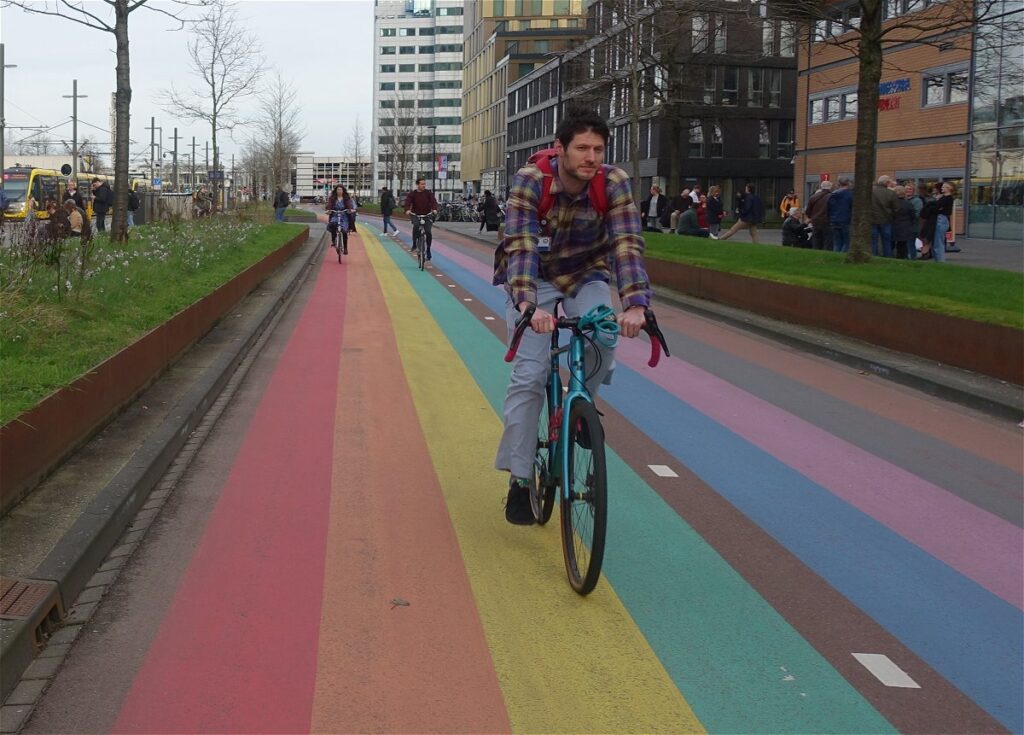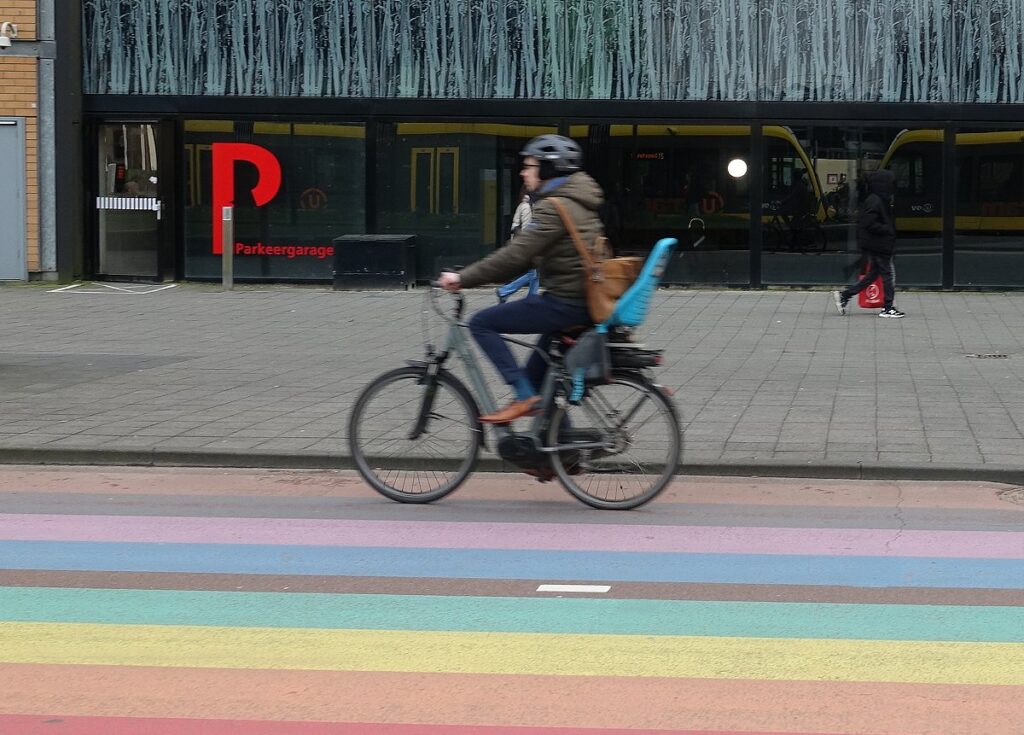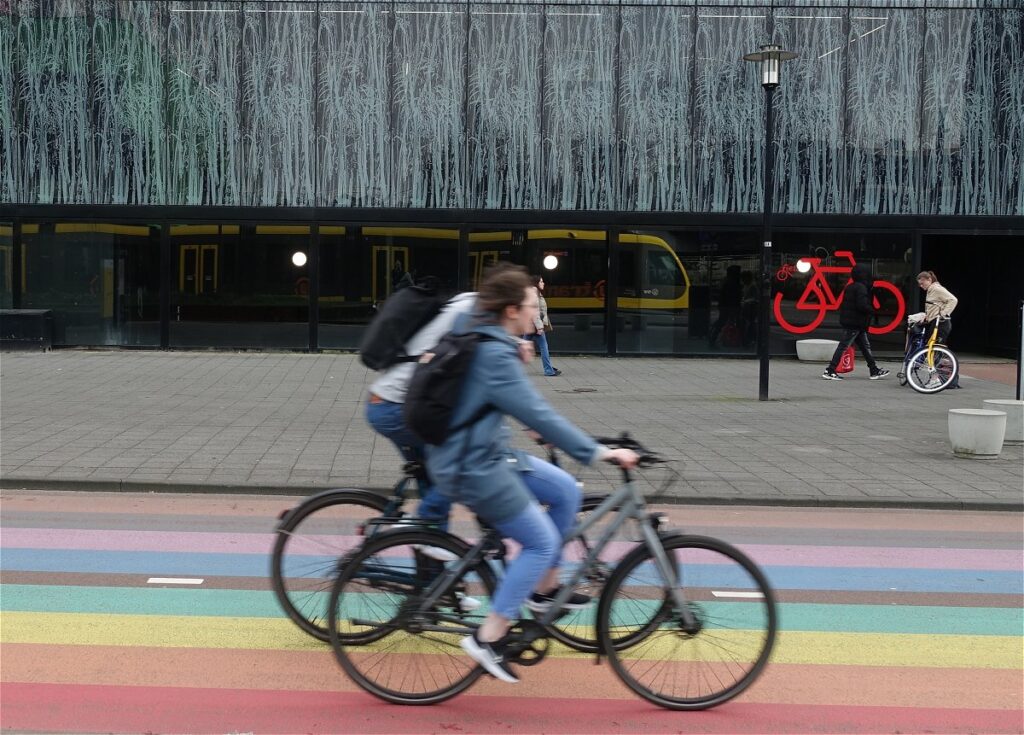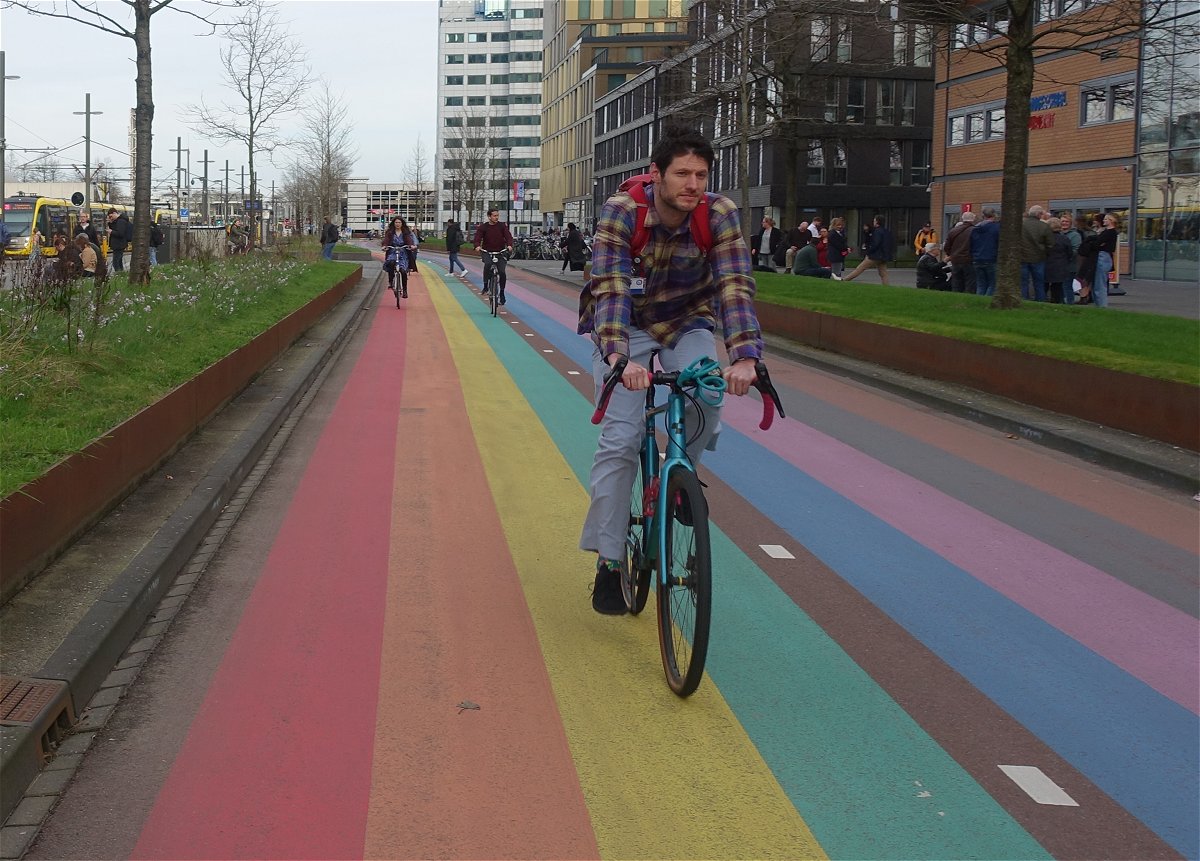Inclusive public space – Leaving the waiting room despite ASD
Access to, being in as well as the use of public space for people with Autism Spectrum Disorder (ASD) often prove to be a challenge. Daan van der Burgh (d.vanderburgh@fietsersbond.nl) gives his personal report for Favas.net. He shares his story with us and talks about his personal circumstances. He has ASD and works for the Dutch Cyclists’ Union (Fietsersbond) where he gained experience with the influence of autism on decisions in traffic and public space. Cycling proves to be an instructive case. Cycling has enabled Daan to leave the ‘waiting room of his life’.
Daan van der Burgh – I love cycling very much. My sister lives 200 km away, but I just cycle to here, despite a high bridge and kilometres with a headwind. It hasn’t always been like this. As a schoolboy I cycled a bit, but in the summers I mainly looked at cycling and the days felt long and boring. When I was eighteen I got a road bike: an old steel racing bicycle. And then I was able to discover my region, the flat land between the rivers. I always knew there was something wrong with me. I was different. I didn’t always fit in. I lost jobs. I didn’t get new ones easily. Eventually I went to a psychiatrist who told me I had autism. Meanwhile I kept on cycling through all seasons. If there was snow, rain or sun I cycled. I kept on cycling on holidays. After all kinds of temporary jobs I got a job at a bicycle parking. The work was not that interesting and the conditions were difficult. So I wanted to leave.
One morning I woke up. I had to work, but discovered my glasses were broken. Just that day I met the former CEO of the Dutch Cyclists’ Union. I seized the opportunity to ask her if there might be a job for me somewhere. And then, yes, – 42 years old – I was able to go to work at this famous Union. It really was a job for me. Eventually, I left the waiting room of my life.

Exploratory research
Finally I went doing fulfilling things. But then, in 2020, Covid hit. That was definitely not fun. Everyone had to work from home. My routines where destroyed and a close colleague got a burnout. Despite the mess around me, I got a brainwave and asked myself if something could be done around the theme of cycling and disability. That’s how it started, initially focused on physical disabilities, because they are easier to explain than mental obstacles to moving through public space by bike. After all, you can’t literally see a mental challenge. But it is precisely this challenge that makes the difference in safe traffic and inclusive public space. Even in a cyclist paradise like the Netherlands.
I’ll explain. Autism (often referred to as ASD) is an information processing disorder. An estimated 35 million people worldwide have a form of autism. In my country (the Netherlands) at least 200 thousand people. People like me feel and sense things differently. Experiences are more intense. We have difficulty with changes and unexpected events. Adapting is challenging for me. For example, when I am in a public space, the urban sound, let alone noise, comes in loudly. Even in a building, when the sound from outside is very audible, such as through glass facades or open windows, it is difficult for me to concentrate. When I presented this story at a conference, I strongly hoped that everyone in the conference room would be quiet.
In short, that is why I make different choices than others, such as a good friend of mine. We both live in Utrecht (the Netherlands). From his home to my home he takes the shortest, but busy route. That is also the standard route that the Cyclists’ Union travel planner indicates. I deliberately do not follow this route when I visit him. I prefer a quiet route, despite its greater length, since on my friend’s shorter route you can expect the unexpected. All sorts of things can happen. That is why I prefer my quieter route with fewer intersections.
Is that common for people with autism? In general, there appears to be little attention for these kinds of trade-offs between cycle routes through traffic in the public space of the city. However, Favas.net pointed me to Kate Ball’s blog (at Sustrans), who tells from experience what it is like to cycle through a city with mental (and physical) disabilities and to find a suitable route. So, I realize that my story and that of other experts by experience like Kate matter, but that little else is known about it.
That is why I started an exploratory study. My online survey (October 2023- February 2024: social media, LinkedIn, Facebook, Twitter, and website of NVA, Dutch Association for Autism) received 188 responses, of which more than 100 respondents had autism. I then compared the results of the two groups (ASD, non-ASD respectively). From this I was able to draw the following five conclusions about people with autism on bicycles in public spaces:
= In general, they experience getting (too) close as annoying (60% of the ASD respondents indicated this);
= To be able to relax while cycling, they often need a quieter environment;
= They prefer to cycle alone, because cycling in a group is more difficult for them;
= As many as 56% of people with autism say they avoid busy intersections (compared to 28% of non-ASD respondents);
= Crossing the road is considered difficult anyway. 57% say they have difficulty when it is too busy and 42% say they find it difficult when they are tired.

Finally
People in public spaces and traffic should take more account of each other. This certainly applies to cyclists, where it would help if they knew the traffic rules well and actually applied them. Designers can contribute to the creation of separate cycle paths and networks where the number of intersections is minimized. In addition, as many alternative routes as possible should be present.
Finally, I am available as an expert by experience and hope to contribute to better public (traffic) space by stimulating education and research, and especially by involving people with autism in this.
Acknowledgements
Text: Daan van der Burgh (& Favas.net, editing)
Images: Favas.net
Text based on presentations of Daan van der Burgh at Velo-city (Ghent, Belgium, June 18-21, 2024) and at the National Cycling Congress (The Hague, Netherlands, June 5-6, 2024).
Some backgrounds of ASD and public space
Kate Ball (2022), Cycling with disabilities: Why my challenges are everyone’s challenges. Sustrans, October 14, 2022. Blog at https://www.sustrans.org.uk/our-blog/opinion/2022/october/cycling-with-disabilities-why-my-challenges-are-everyone-s-challenges
Blanca Calvo Boixet et al. (2022), ASD Friendly Design Handbook. Designing public spaces for children with autism and their families. New European Bauhaus, ASD Publics.
Alan Hollander (2024), Creating Inclusive Spaces: Understanding Autism and Public Spaces. Unlocking inclusivity: Understanding autism and transforming public spaces for all. Discover the power of sensory considerations and inclusive design. Blog at https://www.bridgecareaba.com/blog/autism-and-public-spaces, July 6, 2024.
Keren MacLennan et al. (2022), ‘It Is a Big Spider Web of Things’: Sensory Experiences of Autistic Adults in Public Spaces. Autism in Adulthood, September 2022. DOI: 10.1089/aut.2022.0024.

All images by Favas.net: Cycling in Science Park, Utrecht (Netherlands), March 14, 2024.

